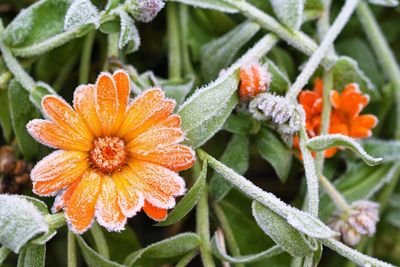About Calendula Winter Care
Calendula is a versatile garden plant. It can be grown in containers or directly in the garden as an ornamental plant, a bright border, a pest deterring companion plant, or a medical herb and can even be grown as a soil amending cover crop. Calendula flowers are edible, and the flowers have been cultivated for hundreds of years to use in dying foods, such as cheeses. The flowers are also used to garnish soups, stews, and salads. Calendula has natural anti-inflammatory, anti-viral, and anti-bacterial properties. It is used herbally to treat skin conditions and wounds and made into immune boosting teas. Cosmetically, calendula is used to soften and moisturize skin and hair. For many of us in cooler climates, winter can provide us with time to make soaps, salves, and herbal infused oils from dried plants we harvested throughout the summer. Since calendula are grown so easily from seed, most gardeners do not find it necessary to keep calendula over winter. It only takes about 10 to 14 days for calendula seeds to germinate, and plants are usually harvestable in 55 days.
How to Keep Calendula Over Winter
In warm climates, calendula can be seeded in succession and grown nearly year-round, but in northern climates, calendula cold tolerance is limited. In fact, these frost intolerant plants would need to be grown indoors in the home or a heated greenhouse through winter. When overwintered indoors, calendula will need bright light and steady temperatures between 70 and 75 degrees F. (21-24 C.). In warm climates, specifically zones 9 and 10, calendula can be grown almost year-round. Calendula plants are not frost tolerant, but they do prefer cooler temperatures. In the south, calendulas may bloom from late winter into spring then die back during the extreme heat of summer. In warm climates, most calendula are still treated like annuals because of their intolerance of the summer heat. Calendula plants are seeded in autumn for late winter blooms or as a winter cover crop. Seeds can be sown again in spring for an extended bloom time. Even in cool climates, calendula plants grow so readily from seed that they can be planted in succession to extend the enjoyment and bounty of these blooms. In cool climates, calendula seeds should be started indoors six to eight weeks before the last expected frost. These early spring blooms will benefit pollinators and are great companions for fruit trees and early vegetable crops. Calendula seeds sown directly in the garden in mid to late summer will provide autumn blooms. A general rule of thumb is to plant calendula as you would plant cool loving crops such as spinach.
